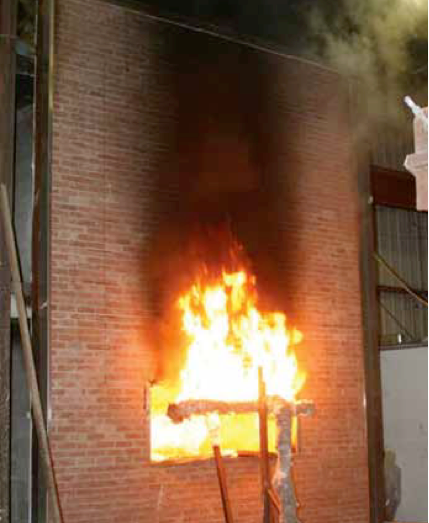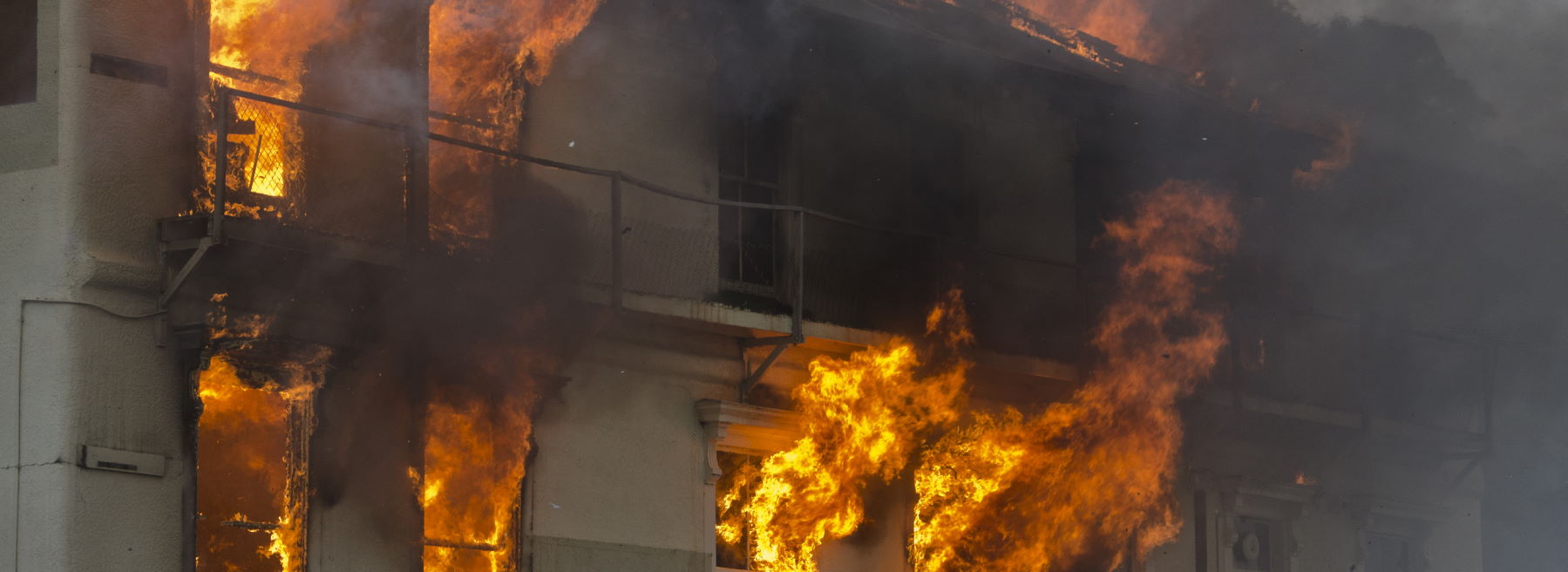What is NFPA 285?
 Typical example of the NFPA 285 Fire Test. Journal of Building Enclosure Design, Summer 2012, “NFPA 285: What You Need to Know”The technical title for NFPA 285 is “NFPA 285 Standard Fire Test Method for Evaluation of Fire Propagation Characteristics of Exterior Non-load-bearing Wall Assemblies Containing Combustible Components.” It is not a single component test.
Typical example of the NFPA 285 Fire Test. Journal of Building Enclosure Design, Summer 2012, “NFPA 285: What You Need to Know”The technical title for NFPA 285 is “NFPA 285 Standard Fire Test Method for Evaluation of Fire Propagation Characteristics of Exterior Non-load-bearing Wall Assemblies Containing Combustible Components.” It is not a single component test.
The NFPA 285 test is performed on specific wall assemblies. Any deviation from the assembly details, other than like product replacements, require a separate NFPA 285 test.
When a manufacturer denotes that their product “meets NFPA 285,” what should be stated is that a specific wall assembly, which includes their product, has passed the test. An evaluation report, from a qualified fire consultant, would be available and indicate the results of the product’s inclusion, and precisely delineate the assembly’s composition.
The NFPA 285 test is performed on a two-story wall assembly constructed identical to the materials specified (minimum height of 18 feet (5.5 m) by 13 feet 4 inches (4 m) wide). Multiple thermocouples are placed throughout the wall assembly and measure temperatures to ensure they do not exceed 1,000 °F (538 °C) during the 35-minute test. Other factors measured are; flame spread, flame height and flame propagation to the second-floor room. If the wall assembly passes the NFPA 285 test it will have an approved ICC Evaluation Report.
History of NFPA 285
In the energy crisis of the 1970’s the building industry introduced exterior foam plastic insulation to increase energy efficiency. Since many building construction types listed in the building codes required noncombustible components, the addition of the combustible insulation needed to be tested.
The Society of the Plastics Industry worked with the fire officials to design a test which could determine the potential flame spread of specific wall assemblies. Fire testing of assemblies was developed and first included in the 1988 UBC as a requirement for exterior walls that contain combustible material (foam plastic insulation.)
Further modifications of the fire test reducing the scale of the test which allowed its use indoors was developed and adopted into the 1992 UBC. The modified test was submitted to the NFPA Committee on Fire Tests. In 1998 the NFPA 285 fire test was first published and is the method in use today. It is used to evaluate the potential for vertical and lateral flame propagation when combustible components are included in the wall assembly for Type I, II, III or IV building construction with walls extending 40 feet above grade.
Engineering Evaluation
An alternative to NFPA 285 full wall fire testing can be provided in the form of a limited engineering analysis or Engineering Evaluation provided by an engineer familiar with the NFPA 285 test and is knowledgeable in the field. This evaluation is based on the burning characteristics of a product as determined by ASTM E1354 “Standard Test Method for Heat and Visible Smoke Release Rates for Materials and Products Using an Oxygen Consumption Calorimeter.” Values determined by the E1354 test are compared to that of the similar material used in the original NFPA 285 test.
Engineering Judgment Letters Available
For specific commercial projects, if an existing NFPA 285 assembly test is not available, VaproShield will work with our fire consultants to provide an engineering judgment letter. In most cases, VaproShield will absorb the cost of acquiring the Engineering Judgment Letter.
Exemptions for NFPA 285 Testing
In the 2015 International Building Code, Chapter 14 Exterior Walls, the following exemptions are provided as an alternative to the NFPA 285 acceptance.
1403.5 Vertical and lateral flame propagation.
- Walls in which the water-resistive barrier is the only combustible component and the exterior wall has a wall covering of brick, concrete, stone, terra cotta, stucco or steel with minimum thicknesses in accordance with Table 1405.2.
- Walls in which the water-resistive barrier is the only combustible component and the water-resistive barrier has a peak heat release rate of less than 150 kW/m2, a total heat release of less than 20 MJ/m2 and an effective heat of combustion of less than 18 MJ/kg as determined in accordance with ASTM E1354 and has a flame spread index of 25 or less and a smoke-developed index of 450 or less as determined in accordance with ASTM E84 or UL 723. The ASTM E 1354 test shall be conducted on specimens at the thickness intended for use, in the horizontal orientation and at an incident radiant heat flux of 50 kW/m2.
VaproShield’s RevealShield SA Self-Adhered and PanelShield SA meet the exemptions of 1403.5.
Standard: heat release rate of less than 150 kW/m2, total heat release of less than 20 MJ/m2, an effective heat of combustion of less than 18 MJ/kg, flame spread of 0 and smoke developed index of 75.



